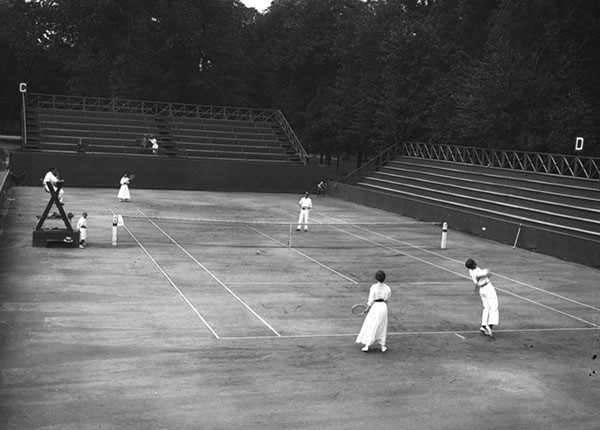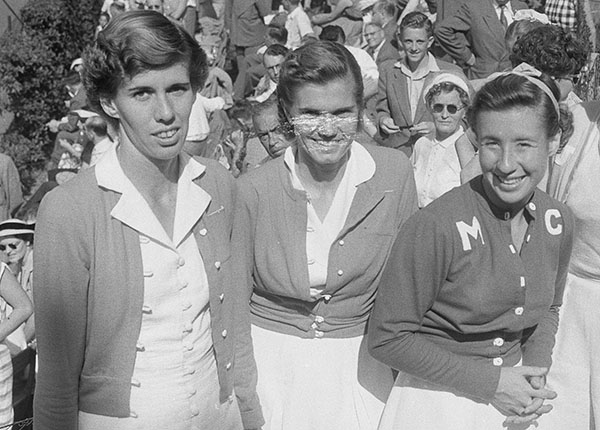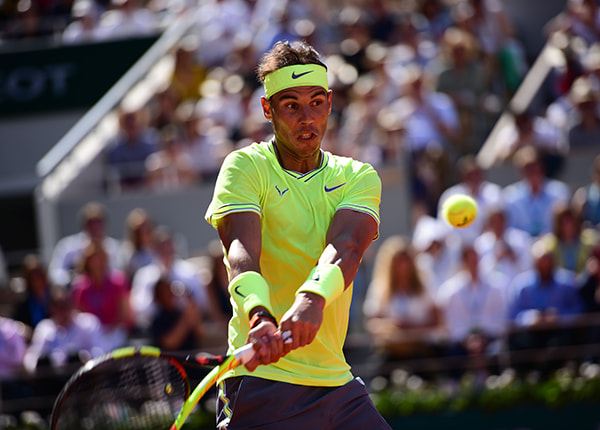PROFILE | ROLAND GARROS
The only grand slam on clay is renowned for its style, intensity and heritage

NameRoland Garros or The French Open
Dates May-June
Established 1891
Surface Clay
Tour ATP/WTA
Tier Grand Slam
Prize-money €34.4 million total for the 2021 edition
Location Roland Garros is situated in the Bois de Boulogne, a public park in the west of Paris.
Seated by an immaculate red clay court, sunkissed and gorging on a sumptuous French pastry as the world’s finest players slide before you: Roland Garros is an incomparable joy for this writer.
Each major has its distinguishing attributes.
While Wimbledon celebrates frantic play amongst a serene backdrop, Paris relishes the flamboyant, until the opening ball is struck and the gruelling rallies commence.
As the only major played on clay, Roland Garros is unique and rewards certain players over others.
The Parisian dirt accentuates topspin (Rafael Nadal), demands consistency (Rafael Nadal), and often requires brute strength (Rafael Nadal) to end points.
You may have noticed the first mention of that immortal Spaniard...but we’ll get to him later. First, let’s go back to the tournament’s origins.
The Beginning
The first French Championships (Championnat de France) was played in 1891 at Parc de Saint-Cloud in Paris. H. Briggs, an English resident of the city, won the event after only a day’s play.

Until 1925, the Championnat de France was only open to members of home tennis clubs. This helps explain why it was dominated by French competitors until the the dawn of World War I.
Victors of that era included Parisien Max Decugis, who claimed the singles title on eight occasions between 1903 and 1914. The women’s singles was added in 1897 with Adine Masson the inaugural champion.
Between The Wars
When the event resumed post-war in 1920, French fans had an enviable collection of native superstars to support.
Suzanne Lenglen and the Four Musketeers (Jean Borotra, Henri Cochet, Jacques Brugnon and René Lacoste) dominated the Championnat for the next decade.

Lenglen won six of the seven singles between 1920 and 1926. La Divine also captured 12 French titles in doubles and mixed. Meanwhile, the men’s events belonged to the Musketeers from 1922 to 1932, with 10 of the 11 singles titles going to one of the quartet.
During the 1920s, the tournament also underwent two significant changes.
It opened to international players in 1925 and three years later - due to continued expansion - moved to the larger surrounds of Roland Garros in the Bois de Boulogne.
Roland Garros, who the site and tournament are named for, was a famous aviator and fighter pilot during World War 1.
In the years leading up to the Second World War, the Championnat took on a more international flavour. The United States enjoyed success in the form of four-time champion Helen Wills, Don Budge and Don McNeill. The Germans also did well with multiple titles for Hilde Krahwinkel Sperling and Gottfried von Cramm.
The End of Amateurs
After WWII, the tournament resumed and the United States continued to dominate the women’s side.

From 1946 to 1960, the event was won by a US woman on ten occasions. Noteworthy champions during that spell include Maureen Connolly, who won the calendar grand slam in 1953, and Althea Gibson (1956), the first African American player to win a major.
One of the more interesting post-war competitors on the men’s side has to be Jaroslav Drobny.
Born in Prague, Drobny defected in 1949 and became an Egyptian citizen. Bespectacled, left-handed and armed with a formidable serve, Drobny was a superstar on clay. He was twice champion (1951, 52) and three times a finalist (1946, 48, 50) at Roland Garros. Drobny also won the doubles and mixed titles in 1948.
As the sixties arrived, like in most tournaments of the time, there was a wave of Australian success. After Ken Rosewall took the spoils in 1953, a slew of Australian men followed including Rod Laver (1962, 69), Roy Emerson (1963, 67) and Tony Roche (1966). Meanwhile, Margaret Court captured the first of five singles titles in 1962.
The Open Era
This is the point when all the names will be familiar to you.
In 1969, Laver beat Rosewall in the final and went on to finish the Calendar Grand Slam, a repeat of his 1962 feat. The following year, Court equalled that rare accomplishment and defeated Helga Niessen-Masthoff in the Roland Garros final.
There were many great French Open champions in the latter half of the 20th century. However, it’s probably fair to say that one man and two women defined their respective generations.
Through the 1970s and 80s, Chris Evert was the Queen of Paris.
The Floridian won a record seven French Open titles and reached the last four in 12 of her 13 appearances at the Bois de Boulogne.
Germany’s Steffi Graf took over from Evert and captured six titles between 1987 and 1999. Incredibly, it could have easily been more as Graf also lost three finals in Paris.
Before Nadal, Bjorn Borg was the King of Clay. At just 18, the Swede captured his first Roland Garros title (1974) and went on to win five more before his shock retirement aged 26.
The New Millenium
Roland Garros in the 21st century has been defined by the extraordinary dominance of Rafael Nadal.

In 2005, the Spaniard's maiden appearance in the draw, Nadal captured the title at just 19 years of age. He has gone on to lift 12 more, which is obscene by any metric.
As of 2021, the Mallorcan has accumulated an astonishing winning record of 98% (100-2). Nadal enjoyed final victories over both Roger Federer (four times) and Novak Djokovic (three). Those two rare losses came against Robin Soderling (2009 QF) and Djokovic (2015 QF).
Over the same period, the women’s draw has produced far more champions and the odd surprise.
Justine Henin and Serena Williams are the most successful competitors since the Millenium with three titles apiece.
There have also been some noteworthy shocks with Jelena Ostapanko (2017) and Iga Swiatek (2020) both unseeded when they lifted the Coupe Suzanne Lenglen.
DID YOU KNOW?
In 2019, tournament organisers unveiled the new Court Simonne Mathieu. One of the finest players of the 1930s, Mathieu won singles (2), doubles (6) and mixed titles (2) at Roland Garros.
The French Open hasn’t been kind to many of the sport’s greatest players. Pete Sampras, Jimmy Connors, Venus Williams, John McEnroe and Martina Hingis are just some of the great names who never lifted a French Open singles title.
While there was copious success for French players in the early years, home fans have had less to cheer in recent times. The last French women’s champion was Mary Pierce in 2000, while you have to go back to 1983 for the last men’s winner (Yannick Noah).
